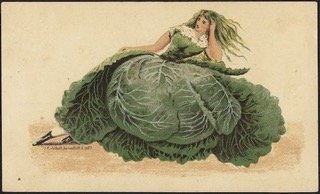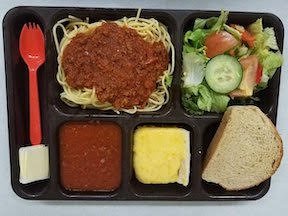A Healthy and Happy New Year!
By Carolina Soto
In January, many people sharpen their resolve towards better health and eating habits. After celebrating with wine, cookies, and rich food, I include myself in this category.
I began the day thinking the high rates of cancer of people who spend years in prison are largely due to the Institutional diet. In my short sixteen months (that felt like a lifetime or two), I saw people suffering dramatic hair loss after six to eight months inside. We had no access to the internet, so when people heard I was a holistic health counselor, many came to ask me about weight and hair loss. It was a pretty simple puzzle to solve. Our diet was very refined simple carbohydrates with lots of available desserts and candy machines. A carb rich diet means more serotonin, and a less aggressive prison population. The vegetables served had lost their nutrition from overcooking or beginning in a can. Leafy greens were missing or not fresh, with few raw vegetables and absolutely no whole grains. Hair was coming out in the women's brushes by the handful.
Something helpful would have been Brazil nuts, a rich source of selenium. They contain more of this mineral than any other nut, with an average of 96 mcg per nut. However, some pack as much as 400 mcg per nut. One nut can contain 175% of the Recommended Dietary Intake, (RDI). Selenium is an essential trace element vital for your immune system, thyroid gland, and cell growth. The nuts are fatty, but if you are looking for natural supplements, a Brazil nut a day keeps your thyroid running smoothly and connective tissue supported. But, of course, there were no nuts available in prison, not even on commissary.
In general, eating a balanced diet can help to promote growth and improve the condition of hair. A healthful and balanced diet is one that contains protein, fruits, vegetables, whole grains, and a moderate amount of fat.
In Danbury Federal Prison Camp, we had an angel who brought beautiful salad bar items, sometimes paying for them himself as an act of Christian goodness. I ate mainly from the salad bar with beans from the hot bar and fish on Fridays. I had been completely vegetarian for five years before, but added fish to my diet while in prison. Pop, short for Popadopulous, defamed as Red in the series Orange Is The New Black, felt I was too skinny and heaped my plate with an amount of fish impossible to eat every Friday. Pop was happy that I was eating something other than salad. I normally queued at the hot food counter for cookies, beans and eventually french fries. I didn't always trade the cookies. Women sidled up to me on my way to the salad bar, saying:
"I've noticed you didn't take your french fries. Could you get them for me? What would you like in return?'
There was something, spinach. By the time my rotation started it was often gone. I gladly bartered away the French fries.
In U.S. prisons and detention centers the average cost of a meal per person is between $2.25 and $3.80. The average cost per American that is not incarcerated is $8.12. The average wage of incarcerated people ranges between state and federal institutions. For prison maintenance jobs the incarcerated can earn $2 per hour in Minnesota and New Jersey, which is very high compared with other states. Incarcerated people who produce manufactured goods often earn higher wages than other prison jobs, reaching upwards of $1.41 per hour depending on the location. In 2005, I made 12¢ an hour. If the United States paid minimum wages and fed people properly, they would have to close the prisons as unprofitable. The13th Amendment sanctions slavery.
Today, what I really want to write about is how we can create good health.
What are whole grains other than brown rice that are tasty and nutritious? Quinoa, technically a seed, has gained prominence in the last ten years. Like amaranth, featured in this New York Times recipe, it is a complete source of protein as it contains all the essential nine amino acids.
Let’s spotlight millet. There are ten types of millet, and I assume I am eating pearled millet from the bin in the health food store. It is not red like finger or Ragi, technically not millet, but in the family and very healthy. I ate millet instead of my 1/4 cup of oats this morning, and I felt good about my choice. I'm not too fond of oatmeal, but I eat it because it is good for me, as my dad would say. Oatmeal is an internal scrubber for your intestines.
Millet is rich in dietary fiber, both soluble and insoluble. The insoluble fiber in millet is known as a "prebiotic," which means it supports good bacteria in your digestive system. This type of fiber is also essential for adding bulk to stools, which helps keep you regular and reduces your risk of colon cancer. The soluble fiber in millet can help reduce the amount of "bad" cholesterol in your blood, a risk factor for atherosclerosis. The soluble fiber in millet turns into a gel in your stomach and absorbs cholesterol, allowing it to be safely carried out of your system. Rich in niacin, millet helps your body manage over 400 enzyme reactions. Niacin is also vital for healthy skin and organ function. Studies on the millet nutritional value suggest that millets act as antioxidants, detoxifying agents, immune modulators and defend against age-related degenerative diseases, such as cardiovascular diseases (CVD), cancer, diabetes, and many more. It is a satisfyingly filling grain with a low glycemic index and is gluten free. Millet takes about an hour to cook. I immediately turn the flame to a low boil and put a timer on for 50 minutes. The millet is almost done. It never hurts to check on boiling grains. I cook it for five more minutes, then turn it off, covered.
Complimenting that with some seeds or nuts is the powerhouse play. I never have a problem with this list of recommended nuts and seeds for health: macadamia nuts, walnuts, hazelnuts, almonds, sesame seeds, pumpkin seeds, and sunflower seeds contain calcium, magnesium, zinc, and other essential nutrients. For example, sesame seeds contain 99 mg of calcium per tablespoon. One tablespoon (9 grams) of poppy seeds contains 10% of the RDI for calcium, while a serving of sesame seeds has 7% of the RDI.
Vegetables and fruits are your immune system; the fresher the better! Eat your vegetables and fruits with varied colors, textures, and fibers, and you will be on the road to good health.
Sometimes when we move a lot and are unaccustomed to it, we get cramps or sore muscles. If so, eat magnesium from these delicious sources:
Dark Leafy Greens - kale, swiss chard, spinach.
Nuts and Seeds: Just a half cup of pumpkin seeds provides nearly 100 percent of the daily requirement for magnesium. Other nuts and seeds high in magnesium include almonds, sunflower seeds, Brazil nuts, cashews, pine nuts, flaxseed, and pecans.
Fish: In addition to being great sources of vitamin D and omega-3 fatty acids, fish like mackerel, wild salmon, halibut, and a small amount of tuna will add more magnesium to your menu.
Beans: Snack on a half-cup serving of dry roasted soybeans, which provides nearly half the necessary magnesium for the day, or add shelled soybeans (edamame) to your shopping list. Other legumes rich in magnesium include black beans, kidney beans, white beans, chickpeas, black-eyed peas, and lentils.
Avocado: Loaded with multivitamins, heart-healthy nutrients, and disease-thwarting chemical compounds, avocados are one of the most nutritious and versatile produce picks around. Add one sliced avocado to any salad or dish and you will have 15% of your daily requirement. I eat a half of an avocado with my evening salad.
Bananas and berries: a medium-sized banana also provides 32 milligrams of magnesium, along with vitamin C and fiber. At only about 100 calories, this is a foolproof fruit to pop in your bag for a portable breakfast or an easy-on-the-go snack. It does have a high glycemic index, so if you are still eating sugar, eat bananas moderately. Of course, many other fruits can add magnesium to your diet, including strawberries, blackberries, grapefruit, and figs.
Dark Chocolate: paired with fresh fruit, dark chocolate makes a decadent and healthy after-dinner dessert. Chocolate contains a significant amount of magnesium. However, dark chocolate is still high in fat and sugars, so you should eat it only in small amounts and enjoy every second of it!. A recent study found that the positive effects vanish when you're out of the moderate range, so keep dark chocolate to about 1.7 ounces per week and really savor it
I love cacao nibs for being non- sugared. I add them to my smoothies for extra crunch!
Here are a few favorite recipes:
Roasted Butternut Squash Coconut Soup (It is good without kale and onions on top!)
Millet Cakes with Carrots and Spinach
Red Lentil Dahl (This is a Nepal style dahl that is good with Millet or brown rice)
Moroccan Chickpeas With Chard (This is made with preserved lemon!)
Primary Food
It should come as no surprise that physical activity is considered a primary food. Think about a scenario where you're feeling tired and weary. Do you crave a carb-centric dish for a satisfying energy booster? Chances are, your high will be short-lived since heavy dishes quickly leave you feeling lethargic and sluggish. Although it may not seem like it, physical activity revs up the body and provides energy. Best of all, the effects last long after you stop exercising!
Do one active thing today and schedule one weekly activity that gets you moving.
Remember, you don't have to engage in strenuous exercise to see results. The goal is to find practical movement you enjoy. Consider mixing it up by trying a new type of exercise.
If you love to dance, put on some music and make sure you dance, take an hour to step into your room, close the door, put the music on and bust a move.
Try a new route today if you like to jog in your neighborhood. Walk a few miles, get outside, enjoy a park or nature for your walk.
Whichever activity you choose, incorporate it into your calendar to stay consistent and become part of your routine. Your mind and body will thank you for it.
Refresh your energy and tame stress by taking a break in the middle of the day. Instead of web surfing, get up and step away from your desk for 15 minutes.
In order to keep our bodies happy and healthy, we need to get moving! Happy New Year!
One of “the real women of Orange Is the New Black” and a holistic health counselor, Carolina Soto is one of the founding members of the Re/Creation writing workshop at Restoration Plaza. Unlike the fictionalized Yoga Jones, Carolina has a long history of work in social justice and advocacy, and is a seasoned painter and visual artist. Since beginning her work in the Re/Creation writing workshop at Restoration Plaza in Bed-Stuy, Brooklyn, Carolina has increased her confidence and aptitude with both the written and spoken word, composing speeches and essays for her advocacy work and as well as written memoir. In particular, her essays and memoirs illustrate her vast capacity for empathy in her descriptions of people with whom she shared time inside. She now splits her time between living in New York City and the Dominican Republic.



